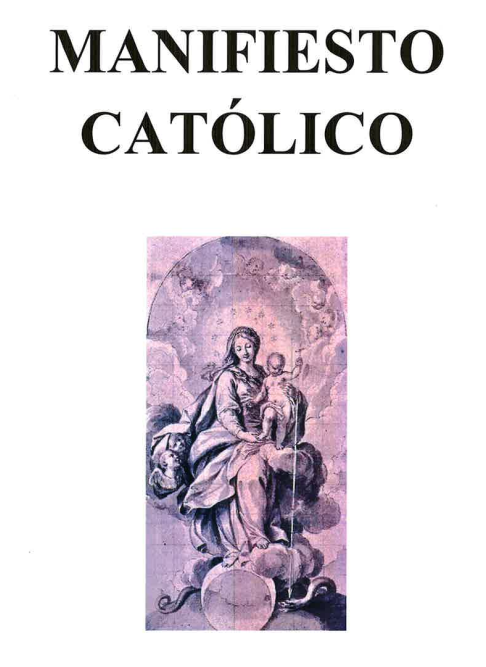The “Manifiesto Católico” is a 70-page theological document that outlines the reasons for the nuns’ decision to break with the modern Catholic Church under the authority of the Vatican. It serves as the justification for their actions, framing their schism not as a rejection of Catholicism, but as an act of fidelity to what they consider the one, true, and unchangeable Catholic Faith.
The central arguments of the manifesto can be summarized as follows:
1. The Papacy and Sede Vacante The core premise of the entire document is the belief in sede vacante (“the see is vacant”). The nuns declare that the last valid Roman Pontiff was Pope Pius XII, who died in 1958. They argue that all subsequent popes—from John XXIII to Francis—are heretics and illegitimate “usurpers” of the papal throne.
2. The “Robbery” of the Second Vatican Council The manifesto refers to the Second Vatican Council (1962-1965) as the “Latrocinio Vaticano II”—the “Vatican II Robbery.” They claim this council was the source of the heresies that have plagued the Church. Specifically, they condemn:
- Doctrinal Changes: They reject the council’s teachings on religious liberty, ecumenism, and its relationship with other religions, which they see as contradictions of previous infallible Church teaching.
- Liturgical Changes: They argue that the liturgical reforms following Vatican II, particularly the creation of the Novus Ordo Missae (the new Mass), are completely invalid because they suppressed the essential elements of the sacrifice. The manifesto asserts that the consecration itself is invalid due to two critical defects:
- A defect of Form, alleging that the sacramental words were altered from a sacrificial formula into a mere “narration of the institution.”
- A defect of Intention, claiming the new rite reflects a Protestant understanding of the Eucharist as a memorial meal or “synaxis,” rather than the re-presentation of the sacrifice of Calvary.
- Changes to the Priesthood: The manifesto claims that the rites of ordination were also altered after the council in a way that rendered the sacrament of Holy Orders invalid.
3. What They Affirm and What They Reject Based on these premises, the nuns formally declare their adherence to:
- The pre-Vatican II Church: They accept all teachings, councils, and the Magisterium of the Catholic Church up to the death of Pope Pius XII.
- The Traditional Latin Mass: They recognize only the traditional Roman Rite as valid.
- The 1917 Code of Canon Law: They reject the 1983 Code of Canon Law promulgated by John Paul II.
4. New Allegiance Having declared the See of Peter vacant and the mainstream hierarchy to be illegitimate, the manifesto concludes by placing the community of nuns under the authority and jurisdiction of Pablo de Rojas Sánchez-Franco and his organization, the “Pious Union of Saint Paul the Apostle.” They recognize him as a legitimate Catholic bishop and pledge their obedience to him as a successor to the Apostles who remains faithful to the true Catholic tradition.
In essence, the manifesto is a declaration of separation from the institutional Catholic Church as it exists today. The nuns argue this is a necessary act to preserve their Catholic faith and live their consecrated lives in accordance with what they believe is immutable tradition and doctrine.


Leave a Reply
You must be logged in to post a comment.